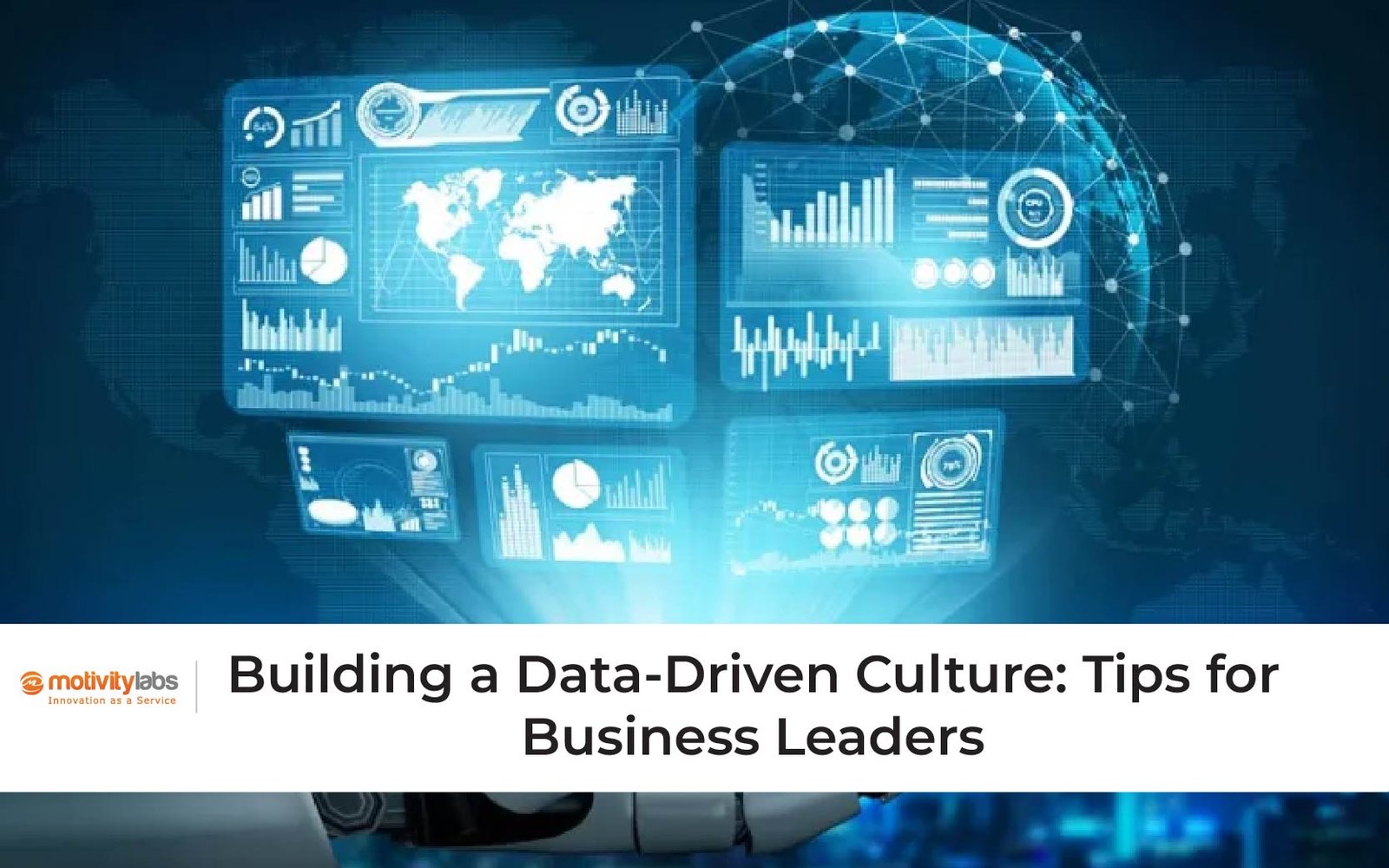Table of Contents
Rapid decision-making in a hypercompetitive and digitally transformed world is no longer a luxury. It is a necessity. At the core of this strategic agility is a Data-Driven Culture, a workplace mindset where decisions are based on data insights rather than intuition or hierarchy. For business leaders aiming to stay ahead, cultivating this culture is not just a technology upgrade. It is a fundamental shift in organizational behavior.
But how do you create such a culture? How do you turn spreadsheets and dashboards into a company-wide movement for smarter, faster, and more confident decisions?
This blog outlines how business leaders can embed data into their culture and empower teams with analytics.
Why a Data-Driven Culture Matters
Data is everywhere. From customer behaviors and sales patterns to internal processes and market trends, companies are swimming in a sea of information. According to Harvard Business School, highly data-driven organizations are three times more likely to report significant improvements in decision-making compared to those that rely less on data.
Nevertheless, merely having data does not guarantee success. What separates thriving businesses from struggling ones is how effectively they use that data. A data-driven culture helps organizations:
- Make evidence-based decisions that reduce risk.
- Identify trends and opportunities faster than competitors.
- Optimize operations and improve customer experience.
- Foster accountability and performance transparency.
- Encourage innovation backed by empirical validation.
Without a culture that encourages data use at every level, even the most advanced analytics tools can go underutilized or misinterpreted.
Tip 1: Lead with Data from the Top
A cultural transformation starts at the top. Leaders must model the behaviors they want to see across the organization. When C-level executives make data-informed decisions and openly discuss the metrics guiding those choices, it sends a strong message: data matters.
Consider making data review a part of every executive meeting. Publicly praise teams that use insights creatively to drive results. When appropriate, use data-driven insights to guide strategic changes rather than relying on intuition. This builds credibility and creates alignment around a single version of the truth.
Tip 2: Invest in Data Literacy
Building a data-driven culture requires more than just tools and dashboards. It calls for a workforce that knows how to read, question, and act on data. Unfortunately, many employees feel intimidated by data or unsure how to apply it.
Here is where data literacy becomes critical. Leaders should:
- Provide ongoing training on basic data concepts and interpretation.
- Embed data discussions into team meetings and project planning.
- Encourage employees to ask questions and challenge assumptions.
- Make data accessible through user-friendly platforms.
A well-informed employee base can better collaborate, make smarter decisions, and move more confidently.
Tip 3: Democratize Access to Data
Silos are the enemy of agility. When only analysts or IT teams have access to critical data, decision-making slows down, and innovation is stifled. Empowering teams across departments with self-service analytics tools and clear access protocols is vital. The goal is to make data as ubiquitous as email, serving as a tool that supports everyone’s daily workflow.
However, making data accessible to everyone does not mean giving unrestricted access to all. There should be:
- Clear governance and role-based access control.
- Training on how to responsibly use and interpret data.
- Dashboards and tools tailored to each team’s needs.
When the suited data reaches the right hands at the right time, magic happens.
Tip 4: Align Data Strategy with Business Goals
Many companies fall into the trap of collecting and analyzing data without a clear business objective. It is similar to sailing a ship without a compass. To build a truly impactful data-driven culture, leaders need to connect analytics efforts directly to business outcomes. Every metric tracked and every dashboard built should tie back to a key performance indicator (KPI) or strategic goal.
Questions to ask include:
- How does this data support our revenue or customer satisfaction goals?
- What decisions will this data inform?
- Who needs this data and why?
When data serves a clear purpose, it becomes a powerful engine for progress rather than just a report that gets ignored.
Tip 5: Foster a Culture of Curiosity and Experimentation
Being data-driven is not just about tracking the past. It is about shaping the future. Great leaders encourage their teams to ask, “What if?” and use data to explore possibilities, test hypotheses, and validate new ideas.
Support a mindset where experimentation is welcomed, and failure is seen as a learning opportunity. A/B testing, pilot programs, and predictive modeling can all be tools for continuous innovation when employees feel safe using them. This builds an adaptive, resilient organization that thrives even in uncertainty.
Tip 6: Celebrate Wins and Learn from Losses
Stories are powerful culture-shaping tools. Sharing how data-driven decisions led to successful outcomes helps reinforce behaviors and motivate teams. Equally crucial is unpacking where things went wrong and how data could have (or did) help identify the issue.
Use internal newsletters, town halls, or team meetings to highlight wins powered by analytics:
- “Here’s how we reduced customer churn by 12% using behavioral data.”
- “Our last campaign drove 3x ROI—here’s what the data told us before launch.”
By making data part of the success narrative, leaders turn analytics into a team sport everyone wants to play.
Tip 7: Choose the Right Tools and Technologies
Technology is the backbone of any data-driven culture. However, investing in cutting-edge platforms without a plan to integrate them meaningfully into workflows is a recipe for frustration.
Select tools that are:
- Intuitive and user-friendly.
- Scalable to accommodate growth.
- Integrated across your existing tech stack.
- Backed by support and training.
From data lakes and business intelligence tools to AI-powered dashboards, the focus should always be on enabling people to make better decisions. It should not be solely about collecting more data.
Tip 8: Build a Data Governance Framework
With great data power comes great responsibility. As data becomes more central to operations, companies must address privacy, compliance, and ethical considerations.
A robust governance framework ensures:
- Data quality and consistency across sources.
- Secure access and usage tracking.
- Compliance with regulations like GDPR or HIPAA.
- Transparent data ownership and accountability.
Embedding governance into your culture shows that data is a tool. It is a valuable resource that must be managed responsibly.
Empowering the Future with Data
Creating a data-driven culture is not a one-time project. Instead, it requires a long-term commitment to changing how people think, act, and collaborate. The process starts with leadership, grows through education and empowerment, and thrives on shared purpose.
Motivity Labs understands that data is more than just numbers; it represents the story of a business. Their data analytics solutions help organizations transform raw information into strategic insights that drive measurable outcomes. From advanced AI models to real-time dashboards, Motivity Labs partners with clients to build the foundation of a culture where data becomes a trusted advisor.



